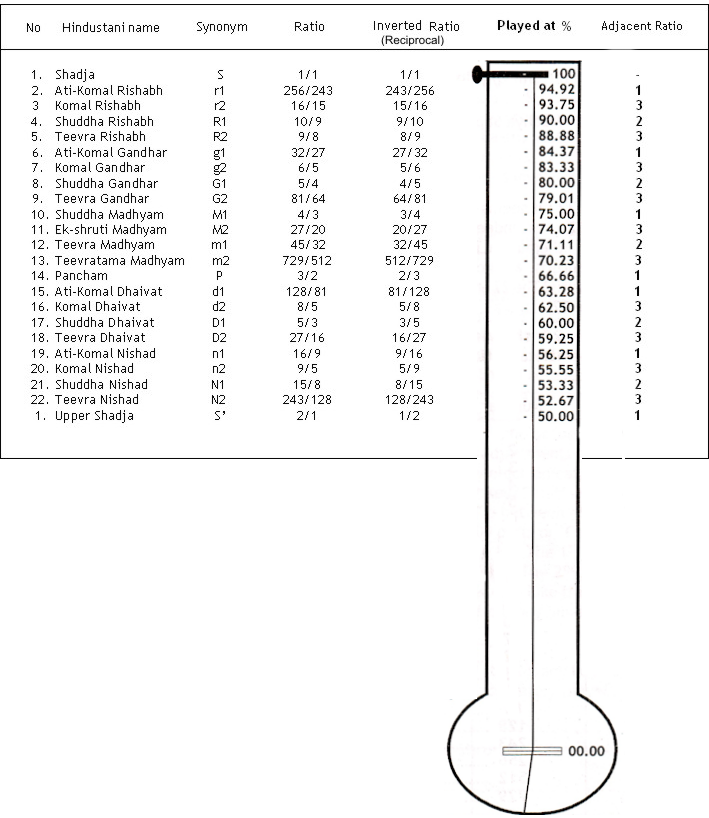Each Shruti is expressed by a 'Ratio'. The Ratios give us the location on a string where the note is accurately playable.
All notes arising from the ratios are playable on string instruments such as a Tanpura or Sarod, or even Ek-tari. Galileo stated a law that "the frequency of vibration of a string is inversely proportional to the length of the string".
This is simple.
For eg., R2 with a Ratio of 9/8 is played on 8/9 part of the string; or P with a Ratio of 3/2 is played exactly at 2/3 part of the string. (Refer to following table)
You can see that once we know the mathematical ratio of any Shruti, we need not play it on the string by hearing it.
It will be precisely played at the point shown in the following table. The students and beginners can very well rely on this table to adjust the Pardas of Sitar or any other string instrument. The established artists and the experts can use it as a check-point.

Table shows the % distances where all the 22 Shrutis can be accurately played on any string according to Galileo's Law.
Adjacent Ratios mentioned in the above table are : 1 = 1.053497942, 2=1.0125, 3=1.04166
It can be appreciated that the same adjacent ratios which governed the derivation of Shrutis, also govern % distances on a string.
These % distances will operate on a string of any length, and tuned to any Shadja. On Sarod, we could show these points under the string by different colours to help the player find it absolutely accurately.
We must remember that human ear can perhaps make a mistake, but not mathematics.
Further, you will observe that the whole Saptak (22 Shrutis) are played only in 50% of the string.
The next (Tar-Saptak) can be played exactly at 1/2 of the above distances, i.e.,from 50% to 25% length of the string. And, the next (Ati-Tar Saptak) can be played between 25% to 12.5% length of the string. Refer to the following table.

Table shows the parts of a string on which 3 Saptaks can be played.
